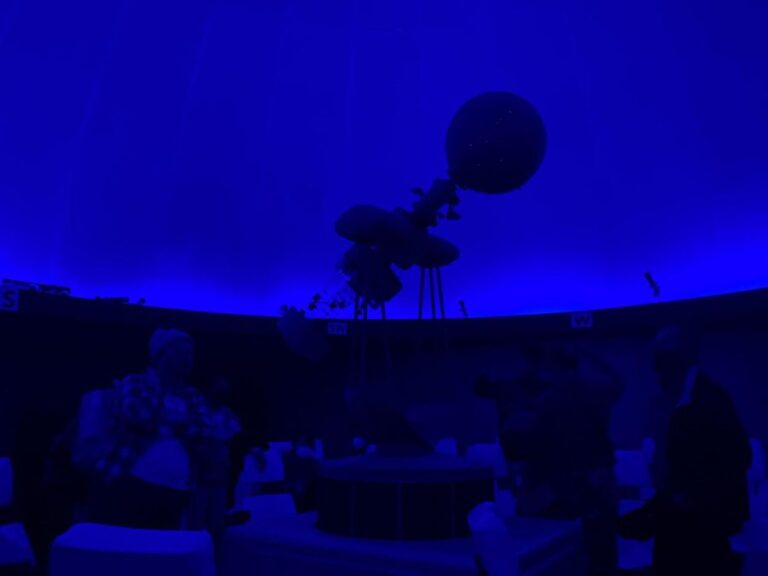The domed ceiling of SF State’s Charles F. Hagar Planetarium dazzled with the image of the San Francisco night sky on Thursday as part of “Noche de Estrellas,” a bilingual astronomy event.
The family-friendly event was designed to be accessible for a diverse range of ages and educational backgrounds. Some attendees had very little experience in astrology, but enjoyed the star-studded experience nonetheless.
It began with research presentations in Spanish by SF State student Joselyn Espinoza Lopez and in English by SF State professor John Brewer. After that, attendees walked down the hall to the planetarium, where they were led through a demonstration of each San Francisco-visible constellation. Finally, attendees made their way up to the SF State Observatory where they used telescopes to observe the clear night sky.
Over 50 attendees crammed into Room 411 of Thornton Hall for the presentations, a handful of them waiting outside as the room reached its capacity. Due to the turnout, organizers decided to split the crowd into groups. Some people stayed for the presentations, while others went straight to the planetarium or the telescopes.
“It was cool,” said attendee Arturo Duran. “It was eye-opening to see all of the constellations.”
SF State professor John Brewer proposed the idea for an event like “Noche de Estrellas” in a grant before the pandemic hit in an effort to make astrology more accessible.
“What if my family and friends couldn’t understand things like public outreach talks and things that might help them understand what I was studying?” Brewer said. “It would be harder to make that connection.”
It wasn’t until students returned to campus that the idea for a Spanish astronomy event came into fruition. SF State student Carissa Avina-Beltran then took the charge and began organizing the event.
“We didn’t really think about it in the sense of the big picture,” Avina-Beltran said. “It was more like, what can I do in my department, in my field, to make things more equitable? What’s something that I would want to see?”
There are plans to make “Noche de Estrellas” an entirely Spanish event in the future, but it will remain bilingual until Spanish-speaking students receive further training for the planetarium.
Avina-Beltran hopes that events like “Noche de Estrellas” can build a sense of community among Latino astronomy students.
“One of the things I was concerned about was people getting the impression that physics and astronomy is super welcoming and diverse,” Avina-Beltran said. “I always wanted a community here. There aren’t many of us, but we found each other.”
According to John Brewer, the plan is to make “Noche de Estrellas” a monthly event during the school year; however, there will not be events during December or January. The next show will be hosted on Nov. 17 at 7 p.m. More information about the next event can be found here.



